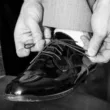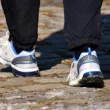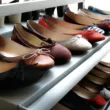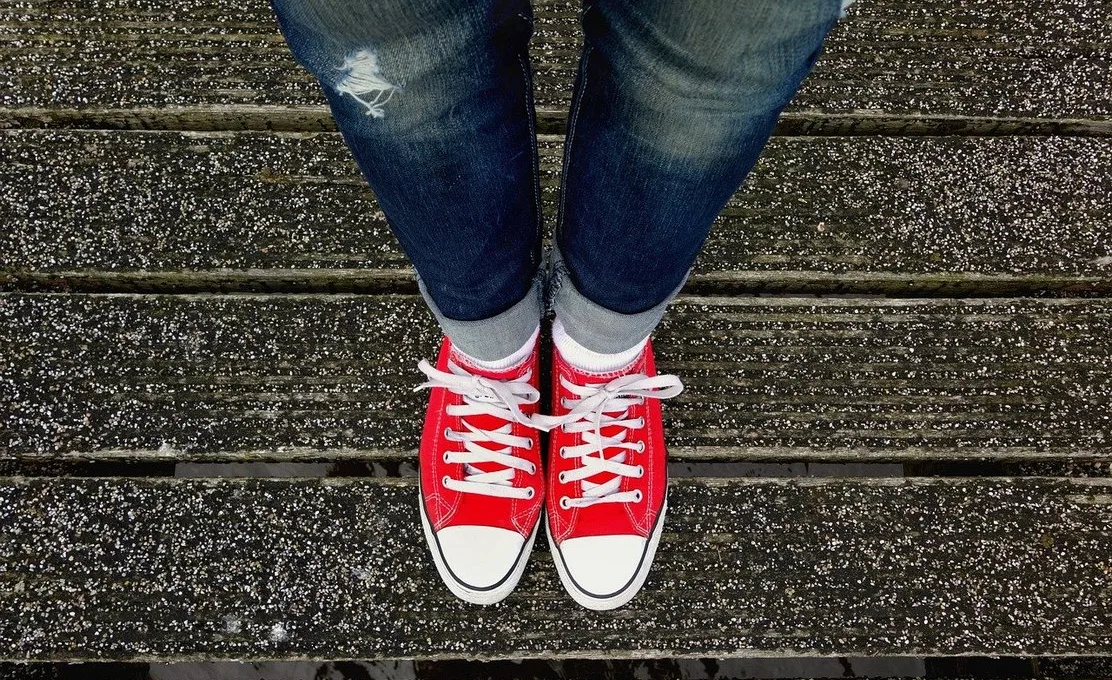If you’ve ever wondered how shoes are made in a factory, here’s a look at the process. First, molds are shaped using die machines, which cut out shoe shapes in a cookie-cutter fashion. These molds have markings to help the assembly process, and the parts of the shoe are bundled and labeled before being sent to the next step. The process is repeated until all the parts are ready to be assembled.
Goodyear stitch
A goodyear stitch is a type of shoe construction in which the upper and welt are woven together. It is also commonly known as welt stitching because it is a common method used for creating chunky country shoes. It is also made with two levels of stitching, which makes re-soles simple. The stitching also makes the shoes water resistant. However, this method of construction may not be suitable for every style of shoe.
A shoe with a Goodyear stitch has multiple layers and is easy to resole. This method is less expensive than one made with the Blake stitch, but requires special machinery. The Goodyear stitching process also tends to be more difficult than other types of shoe construction. The good news is that you can repair a Goodyear shoe yourself if it’s damaged, as long as you’ve a sewing machine. You can also ask a friend or family member to do it for you.
The goodyear stitch is one of the most durable types of shoe construction. A pair of Goodyear welted shoes is durable enough to last a lifetime, but it can be repaired or replaced in the case of wear. Additionally, a goodyear welted shoe is re-soleable. Typically, goodyear welted shoes cost around PS250 ($303) to replace. A good cobbler can re-sole the shoe with a new sole, but it may take a while. The extra cost of a good welted shoe is far smaller than the expense of a new pair.
The Blake stitch, also known as “goodyear welting”, is also an excellent type of stitching that provides additional protection to the uppers of boot and shoe construction. A popular example is the Taft Jack boot. However, unlike the Goodyear stitch, the Taft Jack boot is more decorative than Goodyear welt, and thus is often contrasted with a Goodyear welt. These two styles are often used interchangeably, but the difference between them is subtle.
Blake stitch
A single stitch design, a Blake stitch shoe has a lightweight and flexible sole. It can also be repaired. A special machine is used to join the outsole and insole. These shoes can only be repaired two or three times before they need to be discarded. Blake stitch shoes are a great choice for warm climates. The process of making a Blake stitch shoe involves several steps. Learn how each step is performed to make a high-quality pair of shoes.
One step in the process is the Blake stitch. This construction method combines two layers of leather into a single shoe. The upper and insole are folded under each other. A single thread is then used to join the outsole and upper. A shoemaker guides these three components through a machine known as a McKay. The machine locks the thread in place so it won’t break. The result is a beautifully stitched leather sole.
Another step is the Goodyear welting process. The Goodyear welting process is much more intricate than Blake stitching and uses a new type of machinery to make curved stitches that wrap around the upper and insole. The extra layers of leather make the shoes heavier and less elegant. However, both of these processes help make a better shoe. So, if you are thinking of buying a pair of shoes, take the time to learn how the Blake stitch works.
The Blake stitch is the most common type of stitching used in shoes. It is similar to the welted stitch, but it differs slightly in that it uses fewer layers. The advantage of using this type of stitch is that it is less noticeable and requires a special machine. But, it’s not as water-resistant. A Blake stitch is best used for footwear made for soft and delicate purposes.
Adidas
While most shoes are manufactured in factories, the manufacturing process for Adidas footwear is completely different. The shoes are partially assembled in one facility and then shipped to another location for the final assembly process. These factories use recycled and sustainable materials for the majority of their footwear. They also utilize algae-based EVA, Tencel, and polyurethane. The company employs about 60k people across the globe, and in 2013 they produced 448 million pairs of shoes and 528 million articles of clothing.
Adidas shoes are produced in several countries, including Germany, Canada, the United States, and the Middle East. Most of the manufacturing process takes place in Asia, where labor costs are extremely low and the infrastructure is extensive. This way, adidas is able to keep production costs down while maintaining the quality of its products. In 2016, Adidas sourced 97% of its production in Asia, and it plans to continue to do so. As a result, they can make more affordable and environmentally friendly shoes.
The speedfactory is a major innovation for adidas. It allows the brand to experiment with new sneakers quickly. Instead of making 50,000 pairs of a particular style or developing a marketing plan for eighteen months, Adidas can produce a few hundred or thousand pairs of a concept and test it to see if the product will be a hit. Then, the company can apply what they learned to its contract factories in Asia.
The process of manufacturing Adidas shoes is highly automated. In the new factory, robots and other production set-ups were designed by Oechsler. The partnership with Oechsler is “open source,” which means that the company is willing to share its ideas and team up with outside experts. Oechsler has a long history in manufacturing, starting as a maker of horn buttons in the nineteenth century. Currently, it is a world-renowned expert in plastics injection molding and has built parts for medical and automotive companies.
Blumaka
The company is committed to using recycled materials whenever possible. All Blumaka shoes are made with more than 55 percent recycled material in the bottom sole. The company collects foam scraps that would otherwise end up in landfills. These scraps are then ground into a durable filler for the bottom sole of the shoes. This gives the shoes a cushion feel and durable fabrication. The company also makes sure to disclose all the materials that it uses in its production.
The manufacturing process of regular foams produces millions of tons of waste that is burned or dumped into landfills. These scraps are made up of microplastics and chemicals that can cause health problems. The process also requires millions of gallons of water, which is released as wastewater. This is why the Blumaka Clean Foam company has developed a new process that addresses the problem of the waste generated during manufacturing.
The main purpose of the Blumaka insole is to provide comfort and durability. The company is not optimized for athletic performance, but they do have a strong grip. The insoles feature a highly-textured top layer and rubberized dots to provide traction. The company’s founder, Stuart Jenkins, is the founder of the company. Yastrzemski was given shares in the company in exchange for a positive review. However, Yastrzemski and the other Giants players have no relationship with the company.
The company uses waste foam to make great new products. They use up to 85% recycled material in their shoes. This material contributes to a high percentage of the overall weight and volume of the shoe. This makes for an eco-friendly product that saves billions of gallons of water every year. In addition, they also create an amazing product out of trash. The company has been certified by the Environmental Protection Agency and has won many awards.
Sabah
If you’re looking for a stylish pair of slippers that are handmade in Turkey, then look no further than Sabah. The company’s slippers are inspired by a traditional Turkish shoe that has fallen out of fashion over the past few decades. Mickey Ashmore, the founder of Sabah, tracked down one of the last traditional shoemakers in Gaziantep, Turkey. The two men exchanged phone numbers and began a collaboration, and today they’re selling some of the best slippers in the world.
The process of making Sabah shoes begins with hand lasting, in which colorful leather uppers are wrapped around a plastic mold. This process dictates the shape and size of the shoe, and is very labor intensive. This process also allows craftsmen to master the unique characteristics of leather, something machines cannot do. This process is considered a dying art. It’s possible to visit the factory to watch how Sabah shoes are made, and you’ll be surprised at just how difficult it is to master the art of leather-working.
The sole of a Sabah shoe is made of water buffalo leather. This high-quality leather is very durable and won’t smell over time. It’s also made entirely by hand, with minimal glue and a unique hand-stitched sole construction that has been handed down through generations. Sabah shoes never smell, and they’ll last for years. They’ll stay that way because they’re anti-microbial.
While Sabah’s leather shoe Sabah has been made in Gaziantep, Turkey since 2013, it has outgrown its first workshop and is now expanding. The company will open a factory in El Paso, Texas, in April 2022. The new factory will only employ 12 workers, and will be only a fraction of what the company employs in Turkey. The El Paso factory will have the same quality standards as the Turkish factory.
Podobne tematy




